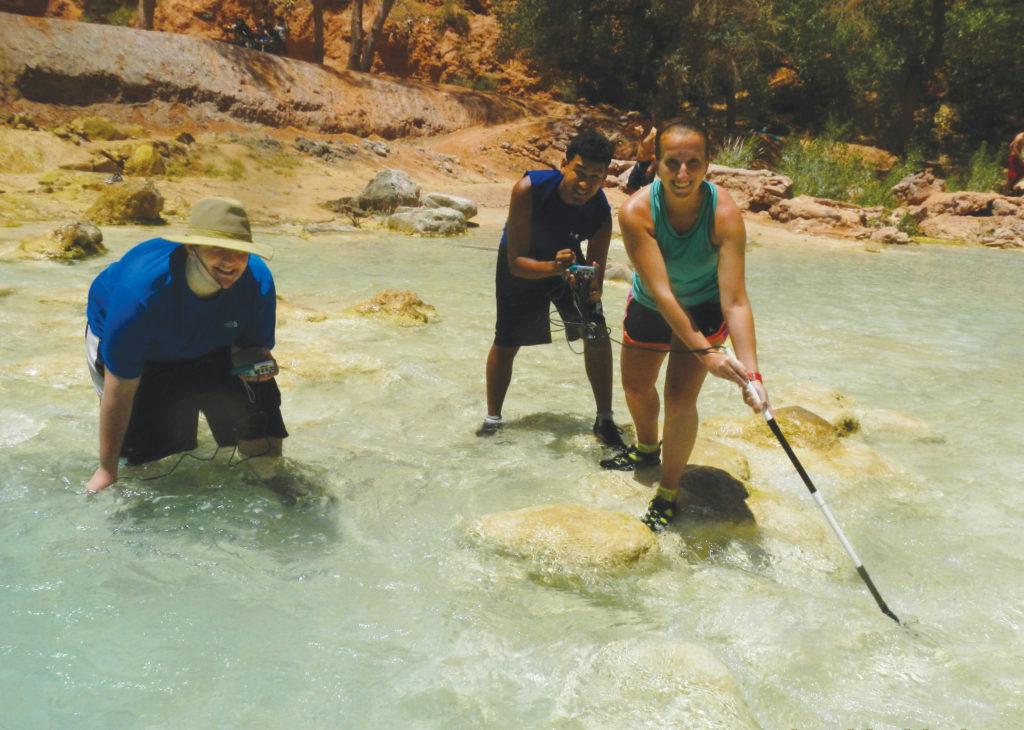
In July, students in Alex Canale’s chemistry class at Saint Peter’s Preparatory School in New Jersey took LabQuest on a ten-day adventure to the Grand Canyon to investigate the water quality of the Colorado River and its tributaries. The students were thrilled to collect real-time data while experiencing the beautiful surroundings.
LabQuest and an array of sensors were used to investigate the mineral content, including calcium ions, of Havasu Creek. The Calcium Ion-Selective Electrode detected levels of calcium ions ranging from 55.4–59.7 mg/L, depending on the location. Students used the Water Quality with Vernier lab book to compare their values with sites throughout the United States. After seeing that their levels were higher than average, students set out to research why.
The bright blue color of the water in Havasu Creek and the travertine formations were the first indications that mineral levels would be high. Additional research revealed that Havasu Creek originates from springs in the Redwall Limestone geologic formation, composed primarily of calcium carbonate from the shells of sea creatures. Limestone is also deposited on the creek bed. Compared to spring-fed drinking water from Supai and the South Rim (10.8 mg/L and 24.7 mg/L, respectively), the creek had significantly higher levels of calcium. The Supai levels were comparable to the levels found at their school’s drinking water (10.6 mg/L).
LabQuest and sensors provided a rich field experience. Students were able to note important features of the landscape that were integral to their understanding of the science behind their results. This is an example of experiential learning at its best.
